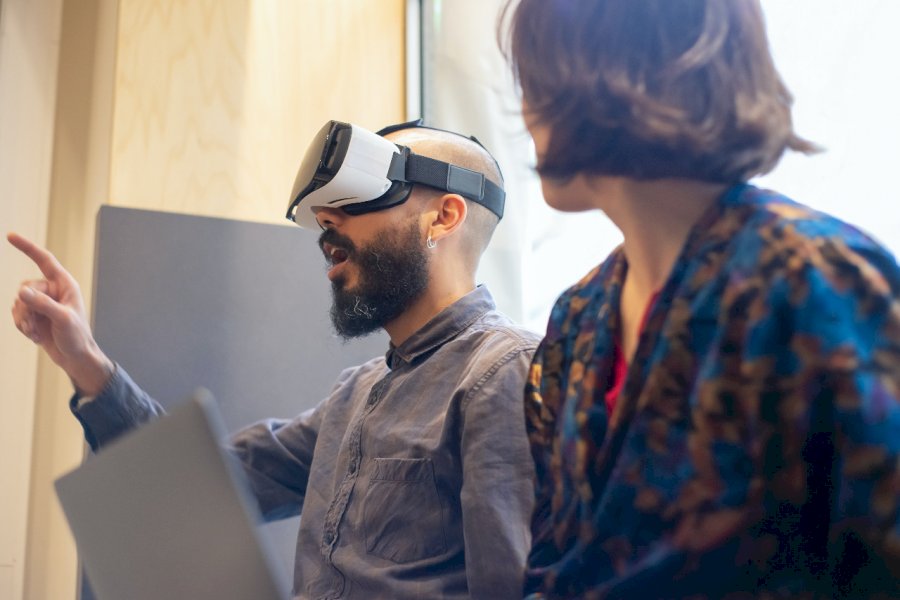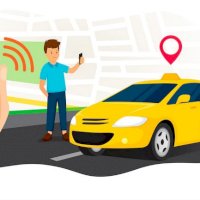Half a century ago, people went from riding horses to cars, so it was time to see what the future of transportation and new technologies would bring. It is mutating towards what is sustainable, while still being attractive and with capabilities that seem taken from Back to the Future. Additionally, it is planned to be accessible to everyone at some point, not just those with more monetary reach.
This new lifestyle will include options for people who cannot or do not know how to drive. According to Goldman Sachs, the global ride-hailing industry is expected to grow 8-fold to $285 billion by 2030. Instead, public transportation has gone mainstream, becoming competitive and featuring new technologies. This makes us think, what kind of technology will come? And what goals does the industry have?
How the metaverse will influence the transportation industry
All the foundations have already been laid to have a virtual reality space in which users can interact with an environment that is generated through computers. The metaverse generates a behavioral change in its users, opening up possibilities in educational, entertainment and commerce. It makes way for multitasking to rise to an advanced level, due to automation.
Sooner than we think, private transportation will no longer be about getting from one point to another, it will be used to experience more. A great example is cars with autopilot or what Holoride does. Based on an Audi startup, they manage to connect the passenger with the car and its environment, by combining data with a car with XR. Includes real-time physical feedback, route length and type results.
The future of robot-taxis transportation
Autonomous driving is already a reality, we have Motional and Via who are about to launch their robo-taxi server in Las Vegas. The vehicles are completely autonomous but without separating themselves from human operators. Already in San Francisco, Cruise makes autonomous taxis a reality, including food delivery among its services.
The unpredictability of the world made it the right time for the future of transportation to open its doors. Imperium Drive is in production of remote driver taxis in the United Kingdom. After the vehicle arrives, the customer will get behind the wheel to drive to their destination. When finished, the car will stop, asking the remote driver to take control again.
How will these wonders be achieved?
You will wonder how everything is now possible, because it is thanks to 5G. Because it has broader bandwidth capabilities but lower latency. Resulting in being able to drive remotely at high speeds without any danger. In the unlikely event that the connection is lost, an emergency maneuver will be made to stop the car in a safe place.
Of course, there will also be autonomous buses, the South Korean company Cielo is developing the service. It is a midpoint between shared and public transportation. It will require the installation of an app, where you can order a taxi or reserve a spot on the bus.
Sustainability of innovations
One of the main objectives of all future transportation and advancements is to be sustainable. In China, approximately 60% to 80% of vehicle sales are expected to be BEVs. But fuel cell EVs and plug-in hybrid EVs will also be sold by 2030. The United States is not far behind, they announced their goal in electric vehicle sales of 50% in 2030.
Uber, for example, has the option of choosing electric vehicles to suit customers. The sustainability trend helps lead to new collaborations. Arrival is a company that collaborates to achieve zero emissions and is designing less polluting cars for transportation companies.
Air taxis. Is it possible?
We have seen in different movies how they projected that the cars of the future would be capable of flying. Skydrive, a Japanese company, is testing prototypes of flying taxis. This would be autonomous, in the image of a drone and hopes to be launched on the market by 2025.
Hyundai and Uber have partnered to develop Uber Air Taxis for what will be an aerial ride-sharing network. It is estimated that the vehicles will initially have a driver, but the plan is for them to be autonomous. However, there is no stipulated date for this, it is only known that they will lend their knowledge to other companies.
Factors driving transportation evolution
Advances are marked by data collection and analysis, electrical systems, autonomous systems, robotization and process automation. In addition to collaboration between companies in the niche, in order to meet the objectives of boosting customer satisfaction. According to World Bank studies, the factors that drive innovation in transportation are:
-
Hyper connectivity to the internet from any space and on multiple devices.
-
Automation and the rise of the collaborative economy.
-
Artificial intelligence, as well as new knowledge about tools that collect and analyze data for analytical or predictive purposes.
-
The demands for more efficient and less polluting services for fuels such as gasoline.
-
The growth of a middle class that has greater possibilities.
-
A financial environment that encourages innovation and the development of disruptive technologies.
We must thank the companies that care about meeting user demands and helping the planet. With the future of transportation hot on our heels, it will be no surprise that our children take a flying bus to school. Don't let your company become obsolete, learn and implement the best for your clients.






